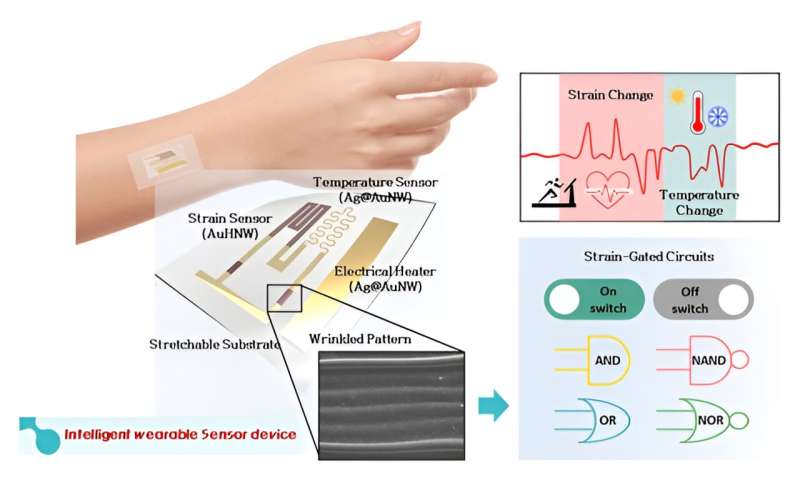A research team led by Professor Sei Kwang Hahn and Dr. Tae Yeon Kim from the Department of Materials Science and Engineering at Pohang University of Science and Technology (POSTECH) used gold nanowires to develop an integrated wearable sensor device that effectively measures and processes two bio-signals simultaneously. Their research findings were featured in Advanced Materials.
Wearable devices, available in various forms like attachments and patches, play a pivotal role in detecting physical, chemical, and electrophysiological signals for disease diagnosis and management. Recent strides in research focus on devising wearables capable of measuring multiple bio-signals concurrently.
However, a major challenge has been the disparate materials needed for each signal measurement, leading to interface damage, complex fabrication, and reduced device stability. Additionally, these varied signal analyses require further signal processing systems and algorithms.
The team tackled this challenge using various shapes of gold (Au) nanowires. While silver (Ag) nanowires, known for their extreme thinness, lightness, and conductivity, are commonly used in wearable devices, the team fused them with gold. Initially, they developed bulk gold nanowires by coating the exterior of the silver nanowires, suppressing the galvanic phenomenon.
Subsequently, they created hollow gold nanowires by selectively etching the silver from the gold-coated nanowires. The bulk gold nanowires responded sensitively to temperature variations, whereas the hollow gold nanowires showed high sensitivity to minute changes in strain.
These nanowires were then patterned onto a substrate made of styrene-ethylene-butylene-styrene (SEBS) polymer, seamlessly integrated without separations. By leveraging two types of gold nanowires, each with distinct properties, they engineered an integrated sensor capable of measuring both temperature and strain.
Additionally, they engineered a logic circuit for signal analysis, utilizing the negative gauge factor resulting from introducing micrometer-scale corrugations into the pattern. This approach led to the successful creation of an intelligent wearable device system that not only captures but also analyzes signals simultaneously, all using a single material of Au.
The team’s sensors exhibited remarkable performance in detecting subtle muscle tremors, identifying heartbeat patterns, recognizing speech through vocal cord tremors, and monitoring changes in body temperature. Notably, these sensors maintained high stability without causing damage to the material interfaces. Their flexibility and excellent stretchability enabled them to conform to curved skin seamlessly.
Professor Sei Kwang Hahn stated, “This research underscores the potential for the development of a futuristic bioelectronics platform capable of analyzing a diverse range of bio-signals.” He added, “We envision new prospects across various industries including health care and integrated electronic systems.”


